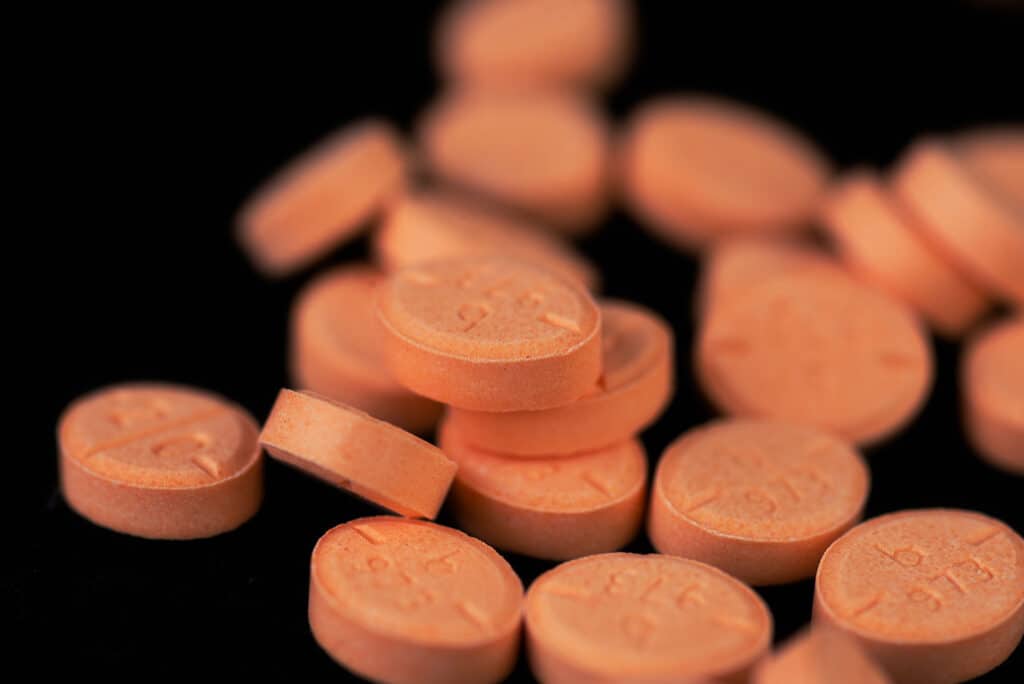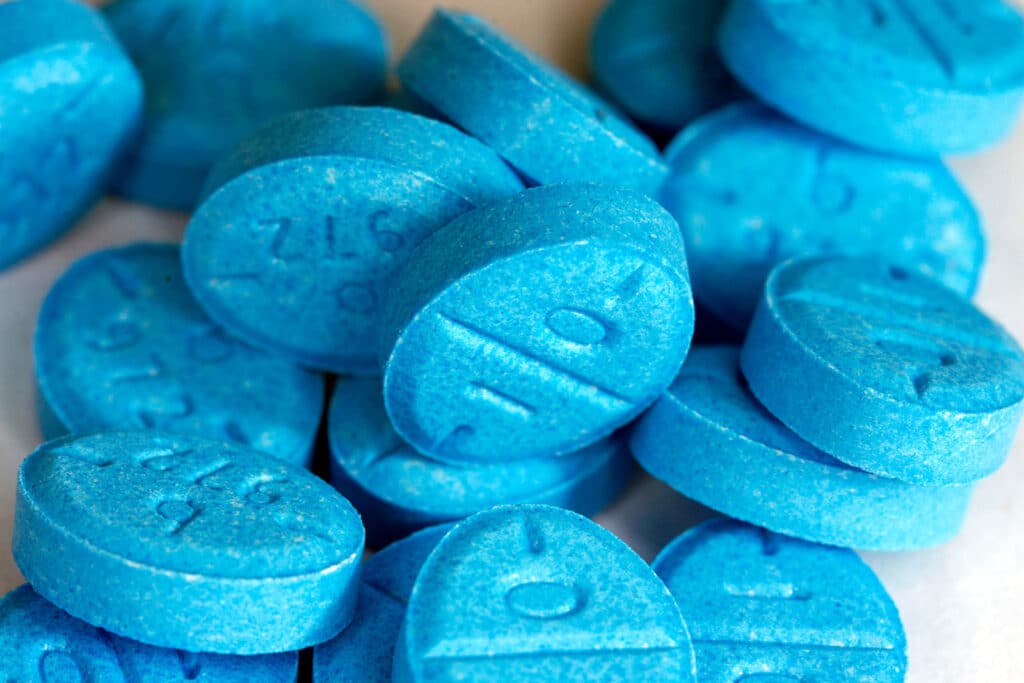Whether illicitly or by prescription, one of the more common questions Adderall users ask is, “Does Adderall build up in your system?”
Adderall is a common prescription used to treat ADHD (attention deficit hyperactivity disorder) and narcolepsy. When taken as intended, Adderall can improve attention and focus, reduce impulsive behaviors, and elevate mood. But when taken without medical supervision, the effects can be dangerous.
This article is written for those looking to understand how long Adderall’s effects last, how long it lingers in the system, and when to expect the beginning of withdrawal.
Table of Contents
- 1 Does Adderall Build Up in Your System?
- 2 Adderall Detection Times
- 3 Factors that Contribute to How Long Adderall Stays in the System
- 4 What Is Adderall’s Half-Life?
- 5 Common Side Effects of Adderall
- 6 When to Expect Adderall Withdrawal, and How Long Does It Last?
- 7 What Are the Symptoms of Adderall Withdrawal?
- 8 Wrap Up Summary
- 9 Conclusion
Does Adderall Build Up in Your System?

Yes, Adderall can build up in your system, but its accumulation depends on factors like dosage, frequency of use, metabolism, and drug formulation (immediate-release vs. extended-release).
- Immediate-Release (IR) Adderall has a half-life of 9-14 hours, meaning it is mostly cleared within 1-2 days after a single dose.
- Extended-Release (XR) Adderall XR lasts longer and can take up to 3 days to fully leave the system.
- Chronic use or higher doses can lead to accumulation, increasing the risk of tolerance, dependency, and side effects like insomnia, heart issues, and anxiety.
- Liver and kidney function affect how fast Adderall is metabolized and excreted.
Adderall Detection Times
Though Adderall’s effect lasts only for a few hours, the substance lingers in the system for days and sometimes even months after the last use, depending on the test conducted. Approximate estimations are as follows:
- Urine test: 72 to 96 hours after last use
- Blood test: 46 hours after last use
- Saliva test: 20 to 50 hours after last use
- Hair test: up to 3 months seven to ten days after last use
Urinalysis and saliva tests detect metabolites produced by Adderall, which remain in the body two to three times longer than the drug itself.
Drug misuse doesn’t typically appear in the hair until seven to ten days after exposure, but once it enters the hair, it’ll remain there for weeks, months, and even years.
Hair tests are the most reliable way to test ongoing or repetitive drug use because of their ability to detect drugs for a significantly longer period. It can also be used to determine what type of drug is used, how long it was used for, or how long it’s been discontinued.
That said, hair tests are only applicable to long-term users. If a person has taken Adderall once or twice, it’s less likely to show up as positive on a hair test.
| Test Type | Detection Time | Notes |
| Urine Test | 72 to 96 hours after last use | Detects metabolites that last longer than the drug itself. |
| Blood Test | 46 hours after last use | Shorter detection window but effective for recent use. |
| Saliva Test | 20 to 50 hours after last use | Detects recent use; metabolites remain 2-3 times longer. |
| Hair Test | Up to 3 months (7-10 days after last use) | Most reliable for detecting long-term or repetitive drug use. |
Factors that Contribute to How Long Adderall Stays in the System
Adderall can remain in the system for anywhere between 24 hours to several days, and is detectable even longer in your hair follicles. Here are the factors that play a role in how long the drug stays in the system:
Dosage
Dosage significantly affects how long Adderall lasts in the system. The more you consume, the longer it’ll take for the body to break down and eliminate the drug from the system.
Genetics
Genetics can play a role in how long Adderall stays in the system. Certain enzyme variants can accelerate the elimination of marijuana in some people. The concentration of these enzymes is often an inherited trait.
Frequency of Use
Like marijuana, Adderall’s effects can be cumulative. This means that the more you use it, the easier it’ll be to detect in the system. A person who’s tried Adderall out of curiosity can flush it out much quicker from their system than a person who takes Adderall every other day.
Metabolism
A person with a quick metabolism can flush out the drug much faster than a person with slow or impaired metabolism.

What Is Adderall’s Half-Life?
Adderall contains a mixture of two drugs: levoamphetamine (l-amphetamine) and dextroamphetamine (d-amphetamine).
For the uninitiated, half-life is a term used to quantify the amount of time a drug’s active substance is reduced by half in the body. Different drugs have different half-lives, and the duration is dependent on how the body processes and ingests the drug (i.e., through the mouth, injection, etc.).
The half-life of a drug is greatly dependent on a person’s age. For l-amphetamine, for example, the average half-life is 13 hours for adults, 13 to 14 hours for adolescents aged 13 to 17, and 11 hours for children aged 6 to 12.
For d-amphetamine, the values are slightly less: 10 hours for adults, 11 hours for adolescents aged 13 to 17, and 9 hours for children aged 6 to 12.
With these figures, we can conclude that Adderall’s half-life is anywhere between 9 to 14 hours.
Common Side Effects of Adderall
Adderall can cause insomnia, increased heart rate, loss of appetite, anxiety, and headaches, with more serious risks including high blood pressure, mood changes, paranoia, and potential dependency.
Common Side Effects:
- Insomnia
- Loss of appetite & weight loss
- Increased heart rate & blood pressure
- Dry mouth
- Anxiety & nervousness
- Headache & dizziness
- Nausea & stomach pain
Serious Side Effects:
- Heart problems (chest pain, irregular heartbeat, high blood pressure)
- Psychiatric effects (paranoia, aggression, hallucinations, suicidal thoughts)
- Severe anxiety or panic attacks
- Seizures (rare but possible at high doses)
- Dependency & addiction risk
Long-Term Risks:
- Cardiovascular strain
- Mood instability & emotional blunting
- Potential exacerbation of mental health conditions (bipolar, psychosis, anxiety disorders)
Seek medical advice if experiencing severe symptoms.
When to Expect Adderall Withdrawal, and How Long Does It Last?
The timeline for Adderall withdrawal differs from person to person. Some people experience withdrawal symptoms as quickly as a few hours after the last dose, while others last up to a few days.
Physical symptoms often peak within four days, with intensity ranging from mild to severe, before gradually tapering off. However, mental and emotional symptoms caused by Adderall withdrawal can linger for weeks and even months.
Users abuse Adderall because it helps the body feel more awake, alert, and focused. It also stimulates the effect that releases dopamine to the brain, giving users a sense of euphoria and well-being. So when a person abruptly stops using the drug, their dopamine levels drop and the body and brain have to adjust to the change.
Those who take Adderall in prescribed amounts don’t struggle with this change, but those who take it without a prescription or more than recommended will immediately notice the effects. The more often it’s taken, the more dependent the body will be, and the harder it’ll be to stop.
Factors that affect how long withdrawal symptoms last and how bad they can be include genes, family history of addiction, and health history (especially mental health).
Without outside intervention (i.e., rehab or therapy), people who quit “cold turkey” are more likely to suffer from depression, insomnia, anxiety, and various other mental health disorders.

What Are the Symptoms of Adderall Withdrawal?
Some of the most common physical symptoms of Adderall withdrawal include:
- Lack of appetite
- Difficulty sleeping
- Muscles spasms
- Fatigue
- Aches and pains
- Stomach cramps
- Nausea
- Vomiting
- Fatigue
On the other hand, psychological symptoms include:
- Irritability
- Nightmares
- Depression
- Suicidal thoughts
- Mood swings
- Memory issues
- Lack of motivation
- Lack of interest in activities
Wrap Up Summary
Adderall’s effects are cumulative, so it builds up in the system. Adderall is detectable in the system for days and sometimes even months after use, depending on the test.
Blood tests detect Adderall 24 hours after the last use, while urine and swab tests detect Adderall between 20 to 96 hours after the last use. Hair tests detect a pattern of repeated drug use over the course of 90 days.

Conclusion
Adderall is a stimulant medication that can accumulate in the central nervous system, especially with frequent use or high doses. While drug tests can detect Adderall for days or even months after use, its impact on the body varies based on dosage, metabolism, and frequency of Adderall use. Those who misuse this prescription stimulant may experience dependency, cravings, and withdrawal symptoms, highlighting the risks of Adderall abuse.
If you or a loved one is struggling with Adderall addiction, seeking professional addiction treatment is crucial. A treatment program at a reputable treatment center can provide detox services, outpatient support, and cognitive behavioral therapy to help individuals regain control of their lives. Consulting a healthcare provider to create a personalized treatment plan is the first step toward recovery from substance abuse.
Published on: 2023-02-23
Updated on: 2025-04-14



